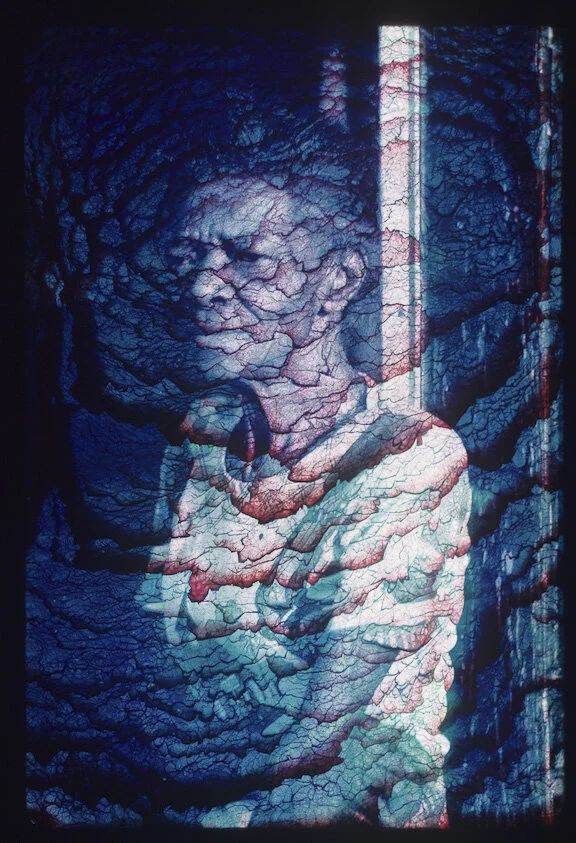Keith Calhoun and Chandra McCormick: After the Flood
© Keith Calhoun and Chandra McCormick
By Micaela Bahn
The photographs show imprints of mold and shadows transposed from other negatives. Colors from the Kodachrome film had lifted and resettled in curious ways, sometimes resembling strange fungi or the ripples of sedimented rock formations. These are the images Keith Calhoun and Chandra McCormick found when they developed the remnants of their life’s work after Hurricane Katrina decimated their Ninth Ward neighborhood. The transformed prints make up their powerful series, Right to Return, which captures a blend between the vibrant neighborhood life before Katrina and the effects of the violent water.
The married couple met in the late seventies when McCormick came to get her portrait taken by Calhoun, then an up-and-coming photographer. After Calhoun invited her to see how the darkroom worked, she became absorbed with the process and a partnership quickly ensued. Both native to the Lower Ninth Ward, McCormick and Calhoun have spent their entwined careers documenting the soul of their neighborhood in its rich musical traditions, church services, parades, and communal spaces. While residents of urban areas often find themselves disconnected from one another, Calhoun and McCormick pay tribute to a city where people’s lives are deeply tied both to each other and to place itself. They also document what they call “a vanishing Louisiana”, part of which is a consequence of the displacement of families after Hurricane Katrina, particularly from the Ninth Ward which was, at the time, the largest community of Black homeowners in the country.
© Keith Calhoun and Chandra McCormick
Like many people in New Orleans, Calhoun and McCormick’s communal life was severely disrupted by the natural disaster. Just before the waters rose and the levees broke in 2005, the couple stored their negatives and prints in plastic containers and elevated them. They then sought shelter in Houston until the storm passed, but when they returned, they found the boxes waterlogged. With much of their work completely destroyed, they placed the remaining negatives in a freezer in a hopeful attempt to halt deterioration. Years later, they found that the photographic emulsion had merged with the water’s elements and created beautiful mixed-media pieces.
Many of these new pieces have a surreal quality, such as one which documents a Pink Parade from before the flood. In its reprint, psychedelic purples, yellows, and pinks swirl around the edges of the photograph like dyes in a Petri dish. The center remains an unaltered bubble, where the image of a girl, mid-dance, swims out to us from a different world. Another photograph, this one of an elderly woman, has a textural quality in its new iteration. The subject already appears weathered, and the gnarled waves of color that billow across her body seem to physically imprint her with the passing of time. What these photographs lost in representation, they gained in abstraction. The alterations work metaphorically as well as literally—they not only memorialize their original subjects, but they also process trauma.
These images are no longer just a testament to the life of the Ninth Ward, but a revelation of how artists can speak to crisis and revival. On their website, Calhoun and McCormack write that, “In spite of the horrors of this event, the colorful and wordless abstraction of this process suggests a way forward, and a hope for the return of lost beauty.” One cannot help but make a connection to the present moment, as communities are forced apart due to the ongoing pandemic. What role will artists have in the return to the collective? Calhoun and McCormack demonstrate how photography can create new schemata for communal resilience.
Check out more of Keith Calhoun and Chandra McCormick’s work on their website here.









